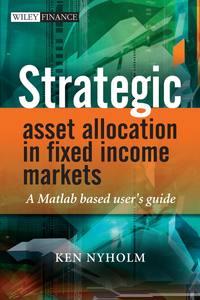Strategic Asset Allocation in Fixed Income Markets

Collection 43478136
Genre:financial management
Language:English
Type:PDF book
Publisher:John Wiley & Sons Limited
Publication date:08.12.2022
Price:$132.40
Views:46
Matlab is used within nearly all investment banks and is a requirement in most quant job ads. There is no other book written for finance practitioners that covers this Enables readers to implement financial and econometric models in Matlab All central concepts and theories are illustrated by Matlab implementations which are accompanied by detailed descriptions of the programming steps needed All concepts and techniques are introduced from a basic level Chapter 1 introduces Matlab and matrix algebra, it serves to make the reader familiar with the use and basic capabilities if Matlab. The chapter concludes with a walkthrough of a linear regression model, showing how Matlab can be used to solve an example problem analytically and by the use of optimization and simulation techniques Chapter 2 introduces expected return and risk as central concepts in finance theory using fixed income instruments as examples, the chapter illustrates how risk measures such as standard deviation, Modified duration, VaR, and expected shortfall can be calculated empirically and in closed form Chapter 3 introduces the concept of diversification and illustrates how the efficient investment frontier can be derived – a Matlab is developed that can be used to calculate a given number of portfolios that lie on an efficient frontier, the chapter also introduces the CAPM Chapter 4 introduces econometric tools: principle component analysis is presented and used as a prelude to yield-curve factor models. The Nelson-Siegel model is used to introduce the Kalman-Filter as a way to add time-series dynamics to the evolution of yield curves over time, time series models such as Vector Autoregression and regime-switching are also presented Supported by a website with online resources – www.kennyholm.com where all Matlab programs referred to in the text can be downloaded. The site also contains lecture slides and answers to end of chapter exercises